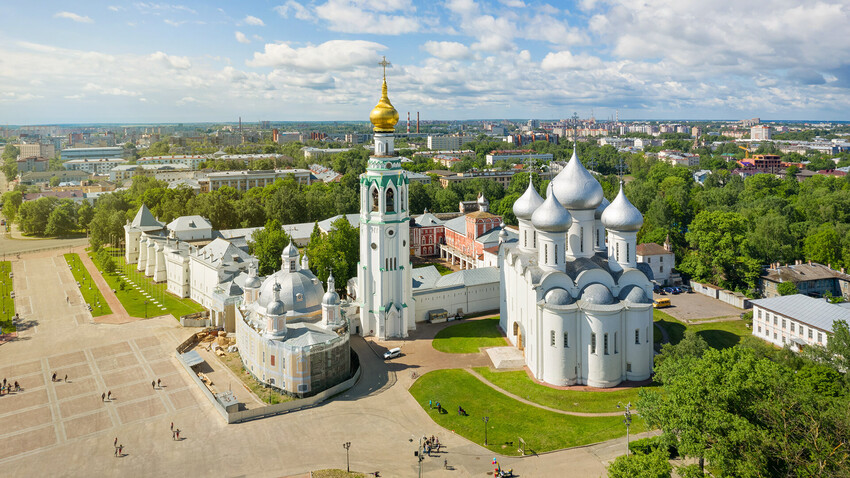
(You can check the transport schedules on Yandex’s website.)
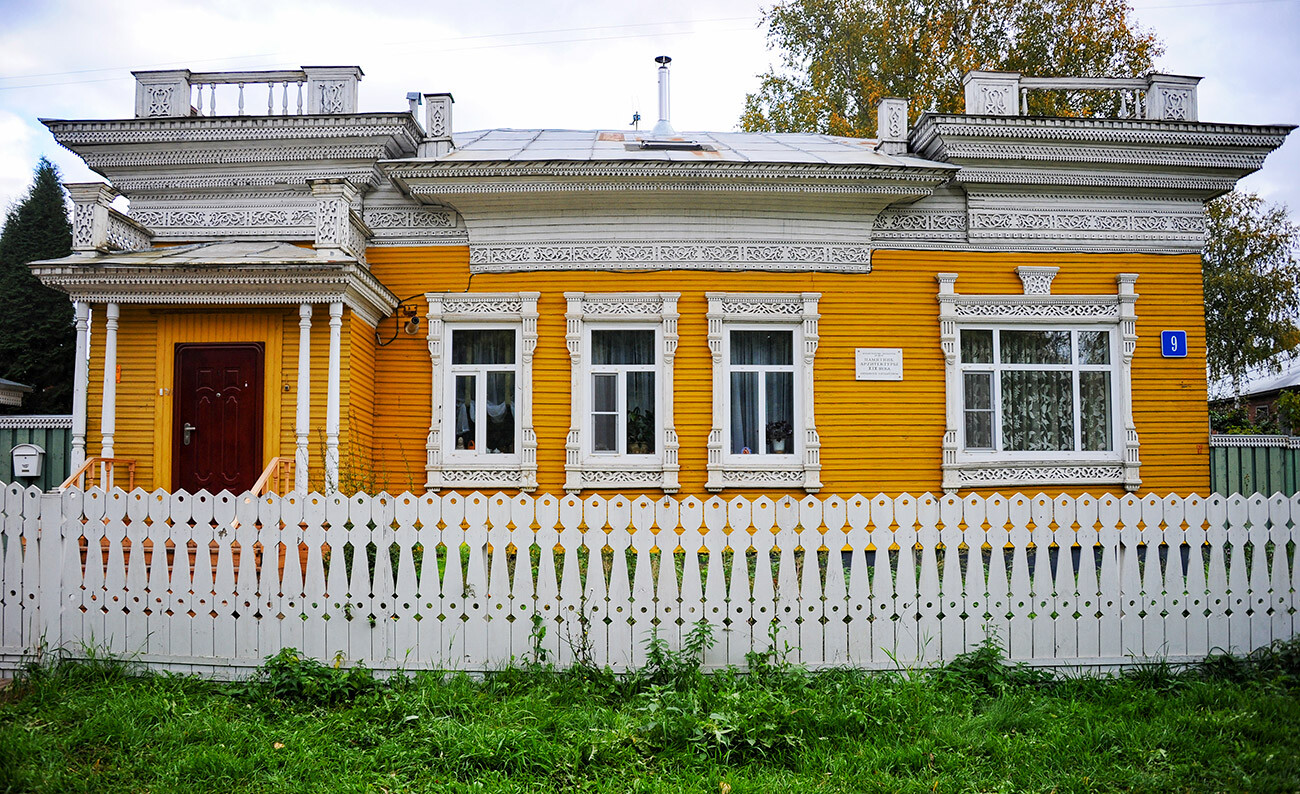
A wooden house in Vologda
Alexey Lebedev/SputnikWake up and head to a 'Sladosti & Radosti' (‘Candies & Joys’) coffee shop (a local chain) and fill up on healthy calories: oats, eggs, avocado toast, etc. Locals also recommend ‘draniki’ (‘potato pancakes’) at the 'In Coffee We Trust' cafe and croissants at the 'Kraffin Bakery'.
And, if you are not a fan of sitting down for breakfast, head to one of the city's numerous bakeries, grab a fresh pastry, coffee or tea - or better yet, Vologda ‘kefir’, ‘ryazhenka’ or drinkable yogurt from any grocery store - and go exploring Vologda!
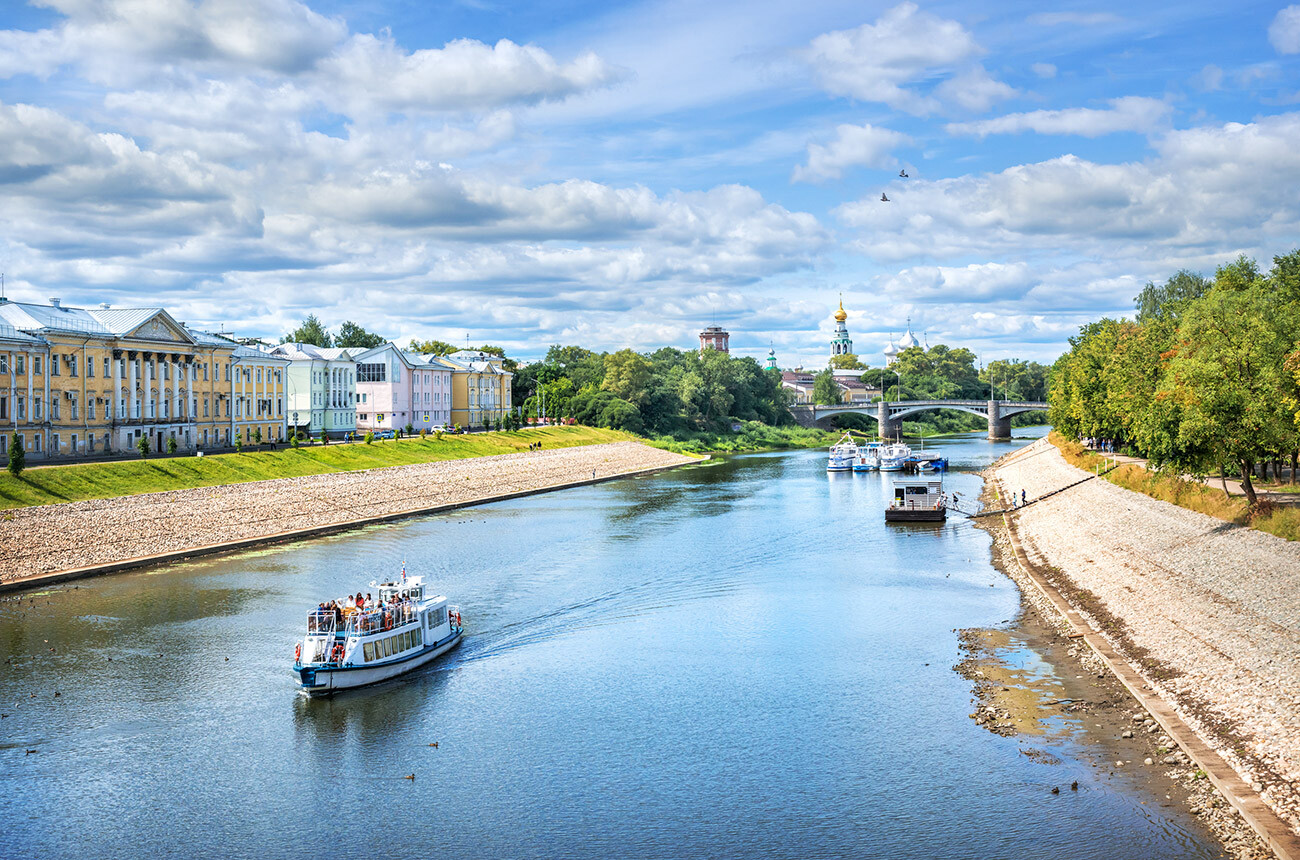
Motor ships at the pier on the river in Vologda
Legion MediaWe recommend seeing the city from the water at once. Tour boats are moored at the wharf of the 6th Army Embankment and go along the Vologda River every 90 minutes. The excursion takes about an hour, on average, and you will see the city bridges, the unusual church of Dmitry Prilutsky with its black domes, the outlines of the local kremlin and the first city museum – the house-museum of Peter the Great, as well as a very colorful half-abandoned river station.
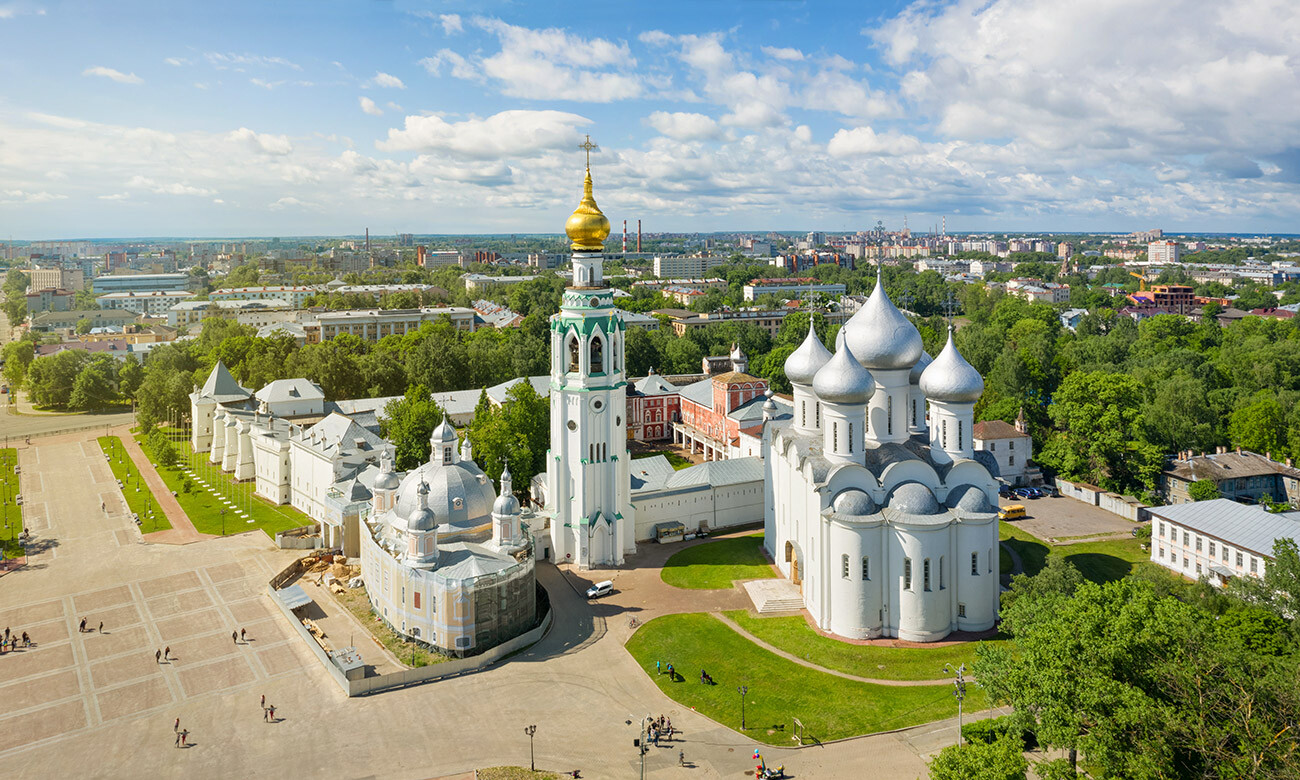
Panoramic aerial view of Vologda Kremlin (St. Sophia Cathedral on the right)
Getty ImagesIf you have been to Moscow or other cities with ancient kremlins (here’s a list of some), Vologda will surprise you. The local kremlin is not surrounded by a powerful fortress wall.
There were once walls, when the fortress was founded in the middle of the 16th century by Ivan the Terrible and resisted the raids of Poles and Lithuanians. But, by the early 19th century, Vologda ceased to be an outpost and the walls and towers were dismantled.
Today's low walls, which you will still see, are nothing more than the fence of the bishop's court, which was once only a part of the kremlin.
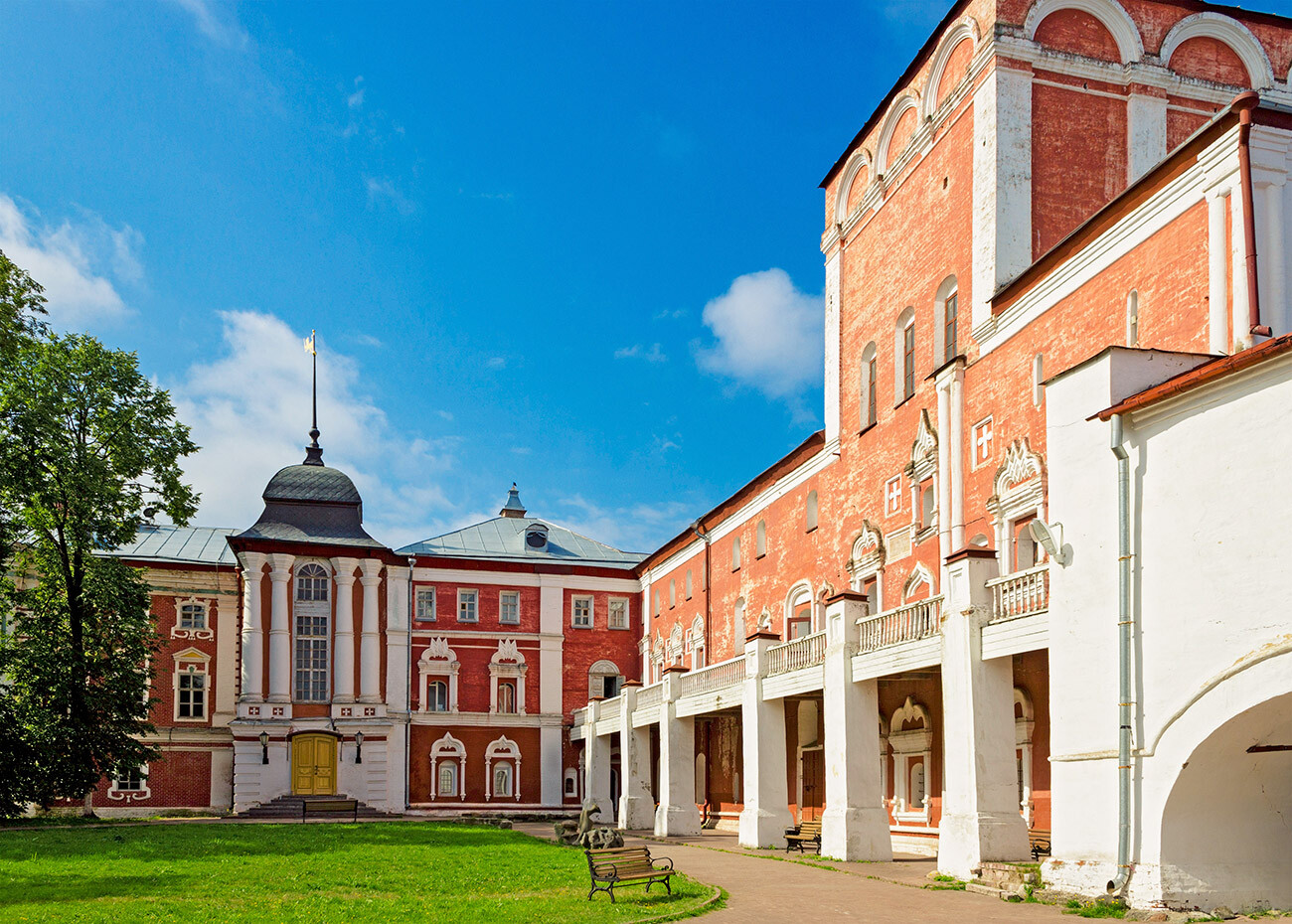
Residence of Orthodox bishop in Vologda Kremlin
Getty ImagesThe main attraction of the kremlin is the St. Sophia Cathedral, erected in the 16th century, and its magnificent frescoes. Pay attention to the temple icon – Sophia, the Wisdom of God. The tradition of dedicating temples to Sophia came to Russia from Byzantium (the main cathedral of Constantinople is also called Sophia). The ancient cathedrals of St. Sophia were built in Kiev and Novgorod.
Inside the present-day kremlin is the Vologda Museum-Reserve with exhibitions devoted to the history of the city and the Vologda Church Diocese. Be sure to visit the Museum of Lace and admire the famous works of local craftswomen. There, you will be told about the folk craft - weaving the finest patterns on special bobbins (Find out how it works here).
Please note: On Monday and Tuesday, the kremlin and its museum are closed.
Head to ‘Myaso’ (‘Meat’), one of the most fashionable restaurants in Vologda and was opened by famous chef and TV presenter Konstantin Ivlev. The restaurant is distinguished by its location, as the veranda directly faces the Zolotukha River, which flows into a ravine.
However, there are, of course, many other restaurants, cafes and famous fast-food chains in Vologda. For example, you can have lunch in the democratic ‘Chikibamboni’ pizzeria or in the Georgian ‘Adjika’ cafe. And you can also enjoy real Russian cuisine in the ‘Drova’ restaurant or in one of the many public canteens (for example, ‘Madame Povari’ or ‘Krasny Most’).
After lunch, take a walk in the Kremlin Garden, take a photo with the monument to the letter ‘O’. Vologda Region is famous for its northern Russian dialect, which is most distinguished by the bright pronunciation of the letter ‘O’ - 'okanie' (while, in central Russia, people tend to pronounce something between ‘O’ and ‘A’ when the ‘O’ is unstressed).

Monument to the letter ‘O’ (left), monument and monument to the first electric lantern (right)
Alexandra GuzevaIn Vologda itself, the residents don't pronounce the ‘O’ so obviously, but, if you visit any village outside the city, you will certainly find Vologda residents who speak in this northern dialect.
From the Kremlin Garden, head to check out the “carved palisade”, the local sightseeing spot. It’s a fence with the pattern that was featured in a famous song about Vologda and is well known all over Russia.
Inside the house with that same carved fence, there is the exhibition center of folk arts and crafts.
After that, take some time for a slow stroll along Blagoveshchenskaya Street . The largest concentration of beautiful wooden houses with carved fences and platbands can be found along it. Interestingly, many houses have two doors next to each other. The thing is that, initially, these two-story buildings were built as profitable houses for rent, so they could be divided into apartments and each renter had a separate entrance. Carved balconies are also a local feature in Vologda.
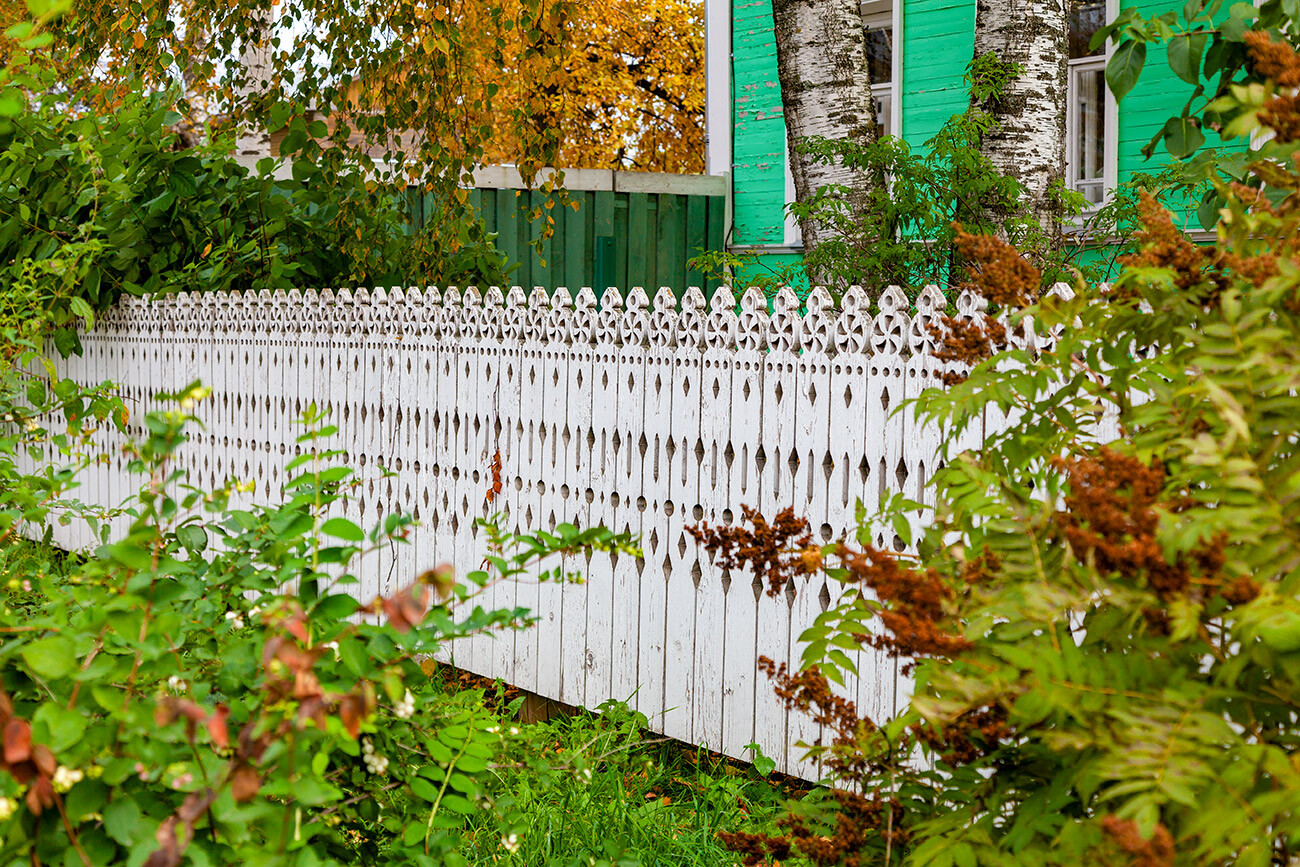
Carved wooden fence, “palisade”
Getty ImagesAfter crossing the Oktyabrsky Bridge to the other side of the Vologda River, visit the charming ancient churches of St. John Chrysostom and of St. Dmitry Prilutsky, which can be seen from the water. Walk along the embankment to the pedestrian Krasny (Red) Bridge and cross to another side of the river again.
After getting tired and realizing you’ve done double your daily steps, sit down and relax in the shady veranda of the ‘Vinoven Bar’ (‘Guilty Bar’), enjoy the surrounding fir trees, the tasty appetizers and a glass of wine or a cocktail. You can also dine at the ‘Montblanc Restaurant’ by the carved palisade or go for infusions at the Botanic Herbarium Bar. And, at the Parovozov restaurant, drinks and food are brought to your table by tiny railroad cars!

Wooden house in Vologda city center
Getty ImagesAfter that, you can walk to Komsomolsky Square, where the whole city gathers in the evenings and on weekends. Or go and listen to street musicians on the Kamenny Bridge, where you should definitely take a picture of the stormy Zolotukha River.
You can leave Vologda the same day by night train. But, we recommend you to stay and visit the beautiful Spaso-Prilutsky Monastery on the outskirts of the city, as well as the ‘Semyonkovo’ architectural and ethnographic open-air museum.
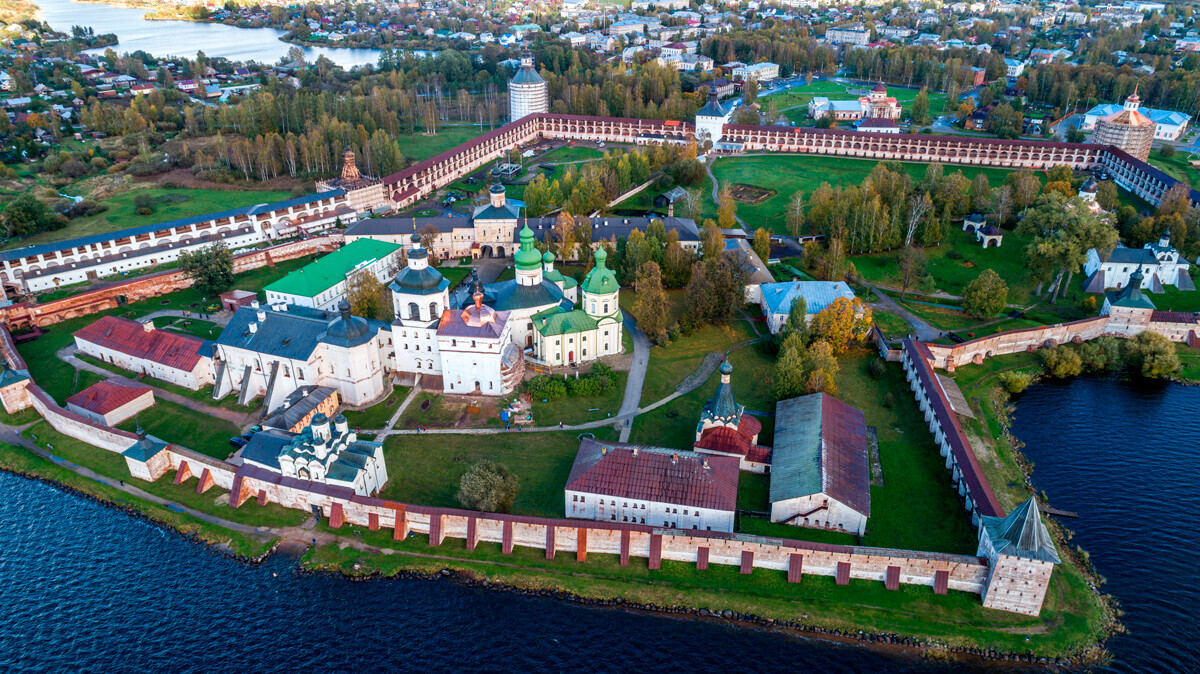
Kirillo-Belozersky Monastery
Ilya Timin / TASSIf you can afford to spend a few more days in Vologda Region, try to visit the famous Ferapontov Monastery and see the preserved frescoes of Dionisius (a UNESCO site, by the way), as well as visit the largest monastery in Russia – the Kirillo-Belozersky Monastery.
Another attraction is Belozersk, one of the oldest cities of Russia, or Cherepovets, the city of metallurgists, or Totma, which has churches in its own original baroque style. And, in winter, it's definitely worth visiting Veliky Ustyug, which houses the residence of ‘Ded Moroz’, the ‘Russian Santa Claus’.
Dear readers,
Our website and social media accounts are under threat of being restricted or banned, due to the current circumstances. So, to keep up with our latest content, simply do the following:
If using any of Russia Beyond's content, partly or in full, always provide an active hyperlink to the original material.
Subscribe
to our newsletter!
Get the week's best stories straight to your inbox